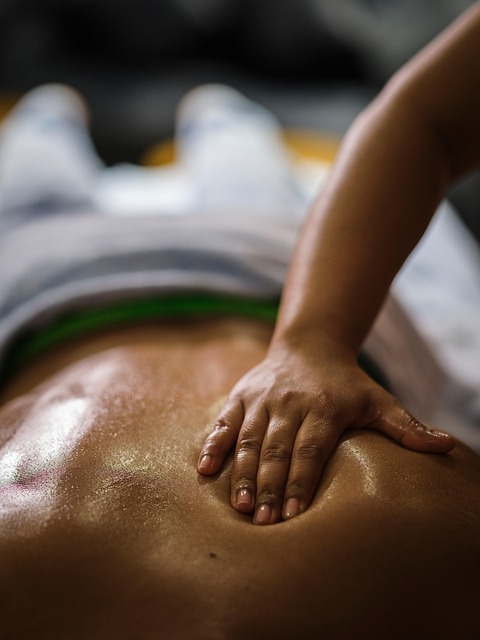Chronic pain, affecting millions globally, is a complex condition requiring effective management for improved mobility, mental health, and daily functioning. Contrast therapy, an ancient practice using alternating heat and cold, is a promising non-invasive method for managing chronic pain and reducing inflammation. This technique dilates blood vessels with heat to release endorphins and flush out waste, while constricting vessels with cold numbs pain and improves flexibility. Practicing contrast therapy at home with hot compresses followed by cold packs can offer daily relief without medication. Expert tips emphasize alternating heat and cold, consistency, and adjusting based on individual body responses for optimal recovery.
Chronic pain is a complex condition that significantly impacts daily life. In this article, we explore an effective yet often overlooked solution: contrast therapy techniques. Understanding chronic pain and its underlying causes is crucial before delving into the science behind contrast therapy. We’ll cover how alternating heat and cold can alleviate inflammation, reduce muscle tension, and promote healing. Learn practical tips for implementing these at-home treatments and maximize their benefits for enhanced relief and recovery.
Understanding Chronic Pain and Its Impact
Chronic pain is a complex condition that affects millions worldwide, significantly impacting an individual’s quality of life. It’s characterized by persistent or recurrent pain lasting for more than 12 weeks, often extending beyond the typical healing period. This long-term pain can stem from various sources, including injuries, conditions like arthritis or fibromyalgia, and nerve damage. The constant discomfort can lead to physical limitations, sleep disturbances, mood changes, and reduced overall well-being.
Managing chronic pain effectively is crucial for restoring mobility, improving mental health, and enhancing daily functioning. One promising approach gaining traction in healthcare is contrast therapy, which involves alternating heat and cold applications on the affected area. This technique has been found to be particularly effective in reducing inflammation and soothing painful muscles and joints. By stimulating blood flow and promoting natural healing processes, alternating heat and cold for inflammation offers a safe and non-invasive method to alleviate chronic pain symptoms.
The Science Behind Contrast Therapy
Contrast therapy, involving the alternation between heat and cold, has gained attention as a powerful tool in managing chronic pain, particularly when it comes to reducing inflammation. This age-old practice taps into the body’s natural response to temperature changes, stimulating blood flow and triggering therapeutic processes. When you apply heat, blood vessels dilate, increasing circulation to the affected area. This promotes the release of endorphins, the body’s natural painkillers, and can reduce muscle tension. Conversely, cold therapy constricts blood vessels, reducing inflammation and numbing the pain sensation.
The science behind contrast therapy lies in its ability to modulate the body’s inflammatory response. Alternating heat and cold helps flush out metabolic waste products and toxins from the injured or sore tissues, speeding up the healing process. It can also improve range of motion and flexibility, making it a valuable technique for athletes and individuals suffering from chronic joint pain. Moreover, contrast therapy stimulates the nervous system, enhancing its ability to perceive and manage pain, which can lead to long-lasting relief.
Implementing Heat and Cold Therapy at Home
Implementing heat and cold therapy at home is a simple yet effective way to manage chronic pain, particularly when targeting inflammation. This technique involves alternating between hot and cold treatments, which can help reduce swelling, relax muscles, and numb painful areas. Start by applying a hot compress for 15-20 minutes to increase blood flow and ease tension. Then, switch to a cold pack for the same duration to constrict blood vessels, reduce inflammation, and numb the affected region. This process, known as contrast therapy, can be repeated several times daily, offering significant relief without the need for prescription medications.
At-home treatments require minimal equipment—a hot water bottle or heating pad for heat, and a cold pack or bag of frozen vegetables wrapped in a towel for cold. It’s essential to listen to your body during each session. If the heat becomes too intense, switch to cold immediately to prevent further irritation. Conversely, if cold causes excessive discomfort, opt for warmth instead. Regular practice of this method can significantly improve chronic pain management and enhance overall well-being.
Expert Tips for Maximizing Relief and Recovery
Expert Tips for Maximizing Relief and Recovery
When employing contrast therapy, one of the key strategies is to alternate between heat and cold applications. This technique effectively targets inflammation and promotes blood flow. Start with a hot treatment to relax muscles and increase circulation, which helps in delivering oxygen and nutrients to sore areas. After several minutes, switch to cold therapy to constrict blood vessels, reduce swelling, and numb the affected area, providing immediate pain relief. Repeat this cycle for best results, ensuring each application lasts around 10-15 minutes.
Additionally, ensure you listen to your body’s response during the contrast therapy session. Some areas might require more attention than others, so adjust the duration or intensity of heat and cold accordingly. Consistency is crucial; regular sessions can significantly enhance recovery over time. Always finish each cycle with a cold application to flush out metabolic waste and reduce inflammation, leaving you feeling rejuvenated and relieved from chronic pain.
Managing chronic pain effectively is a multifaceted approach, and contrast therapy techniques offer a promising avenue. By understanding the science behind alternating heat and cold for inflammation, individuals can take control of their well-being. Implementing heat and cold therapy at home, as guided by expert tips, allows for personalized relief and accelerated recovery. Incorporating these natural remedies into daily routines can significantly improve chronic pain management, providing a gentle yet powerful tool for those seeking long-term comfort.
